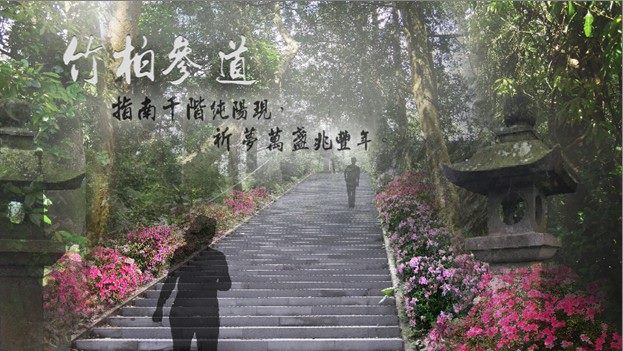Zhinan Temple Trail Slope Improvement Project – Restoring the Ancient Temple’s Former Splendor
 Zhinan Temple has a history of nearly 130 years, and the Zhinan Temple trail is an ancient trail once used by its citizens to reach the temple. The trail’s archaic, tranquil surroundings make it an invaluable monument that also bears cultural, historic, and religious significance. In order to preserve the unique landscape along the trail, the nearby regions have been designated by the Taipei City Government as the Zhinan Scenic Area.
Zhinan Temple has a history of nearly 130 years, and the Zhinan Temple trail is an ancient trail once used by its citizens to reach the temple. The trail’s archaic, tranquil surroundings make it an invaluable monument that also bears cultural, historic, and religious significance. In order to preserve the unique landscape along the trail, the nearby regions have been designated by the Taipei City Government as the Zhinan Scenic Area.
Recently, areas surrounding the Zhinan Temple trail have suffered multiple slope slides and collapses that have toppled over trees, leaving crumbling stone pillars and stone lanterns scattered all over. Moreover, the environment of rare Asian bayberry and bishop wood trees has been encroached upon by other tree species, creating a disorderly site around Zhinan Temple that is in dire need of restoration.
After repeated pleas by the Zhinan Temple and local residents to improve the surrounding environment of Zhinan Temple, the Taipei City Government’s Geotechnical Engineering Office (GEO) has inspected the site in conjunction with Zhinan Temple and local residents. Together, they concluded that in order to maintain the stability of the slope, the Zhinan Temple Trail Slope Improvement Project will focus on improving the stability of the trial’s foundation, and nearly 100 Asian bayberry trees will be planted to expand the area of the existing Asian bayberry plantation. Furthermore, the disintegrating ancient temple relics such as stone lanterns will be restored in accordance with the consensus reached between the GEO, Zhinan Temple, and local residents. The project is slated for completion in April 2020.
Asian bayberry trees can grow as tall as 30m, and it is considered as a near threatened tree. However, the Asian bayberry found near the Zhinan Temple trail is straight, tall and deep-rooted thanks to the decent growth environment there. Since it bears resemblance to Cunninghamia, it is sometimes referred to as Nageia nagi, a tree species suitable for forestation as recommended by the Council of Agriculture. The benefits of Asian bayberry include slope conservation, soil and water conservation, landscaping, and air purification. The GEO hopes to expand the area of Asian bayberry plantation through the trail slope conservation project, as well as to restore temple relics such as the toppled over stone lanterns in order to restore the archaic, solemn, and serene Zhinan Temple trail. The ultimate goal is to restore the region’s cultural and historical value and to recreate the ancient temple environment that is often referred to as the Little Kyoto of Taipei.

![Taiwan.gov.tw [ open a new window]](/images/egov.png)
